Finally! A stretch of good weather!! Time to get away for a few days. We, with Laurie and Peter on Navigator, left Hope Town and headed south towards Little Harbor.

I think I’ll go outside for a while
And just smile
Just take in some clean fresh air, boy
No sense in staying inside
If the weather’s fine and you’ve got the time
It’s your chance to wake up and plan another brand new day….” Remember The Rascals?
Our first travel leg was very short – Tahiti Beach, only 3.5 nautical miles away on the southern tip of Elbow Cay. We often take the dinghy here, but have never brought Kindred Spirit. We anchored just north of Bakers Rock, an easy dinghy ride away from the white sand beach that arcs out into the clear water at lower tides, but is nearly hidden at higher tides.
I have written about Navigator during our first visit to the Bahamas. When we first saw Navigator, an Island Gypsy 36 moored in Hope Town harbor, we decided that was the trawler style we wanted – the covered aft cockpit and the ability to step directly into an open salon, known as a “sedan” or “Europa style.” We became friends with Laurie and Peter, and always credit them for helping us to finally find the trawler style that would suit us.



There’s a story behind this catamaran in the photo below. The night before, back in Hope Town, this charter cat arrived in the harbor with six guys aboard, foreigners from somewhere. That night they played music so loudly we thought it was a restaurant on shore until Al got up to determine the source. The thumping beat of the bass was going strong and loud from 9 pm until after midnight. It was simply rude and inconsiderate. Not to mention very annoying. Fast forward to the next day – Al commented on a catamaran he could see, north of Tahiti, that was clearly aground on the sandbar near the entrance to White Sound, a sandbar that is marked. With the binoculars, he identified it as the same catamaran from the previous night. Justice??



The next morning, we walked the crescent shaped beach at low tide, with coffee in hand. No photos, just wanted to stroll along, picking up anything that looked interesting. When we look southward from Tahiti, we can always see what appears to be a large two -masted schooner in the distance. Later, when we pulled up anchor and headed south, we passed by it for a closer look —



Little Harbour is 12.5 nautical miles from Tahiti Beach, and took us less than 2 hours, anchor to mooring.

Two years ago, with our sailboat, we could not enter Little Harbour itself because of the shallow depths (2014 blog post about Little Harbour) so we anchored out at Lynyard Cay and dinghied into the harbour. With the 4-foot draft of our trawler, and a high tide, we easily made it into the harbor and picked up a mooring from Pete’s Pub.


Pete’s Pub is considered to be the quintessential Caribbean beach bar, outdoors, sand under your feet and t-shirts over your head. The night before was the 22nd anniversary of Pete’s 50th birthday complete with pig roast and lots of partying. Just like two years ago, we opted out of the big bash and arrived for a quiet afternoon lunch, the day after. I’ll admit that there was a tiny part of me that seriously considered going to this famous birthday party, along with all the other wild people. 😉

While we ate our lunch on the deck, the picnic table demonstrated its multi-purpose use – a napping table.

Al and Peter checking the menu.
Special mention here to Rob and Vicki Waz, GHS math teachers. Is this your shirt???
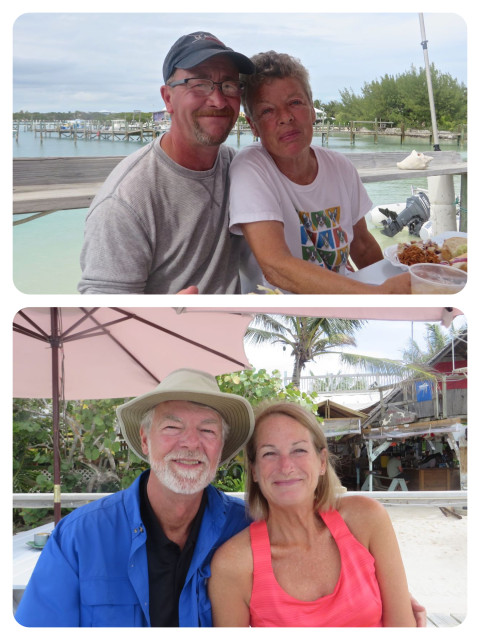
Al and me
After lunch, Al and I strolled around Little Harbour, including a stop at the Gallery. Randolph Johnston founded the gallery and the foundry for his bronze sculpture work. The process, still used today, is “lost wax bronze casting method, a practice that goes back 5,000 years.” His son, Pete, has continued his father’s work creating bronze sculptures of marine life.



I liked this house and its attitude on our first visit. I still like it.



The majestic Great Blue Heron posed long enough for a photo before flying away.
The next morning, I was suffering from a cold so Al joined Peter and Laurie to explore the caves in Little Harbour. (Of course, I insisted that he take the camera along.) Little Harbour has a unique and interesting beginning.
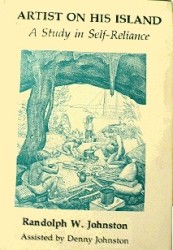
Randolph Johnston, a Smith College professor, with his wife and four children, sailed away from the “megamachine” and materialism of civilization on their schooner, Langosta, arriving in Little Harbour, on the western shore of Great Abaco Island, in 1952. This harbor was virtually uninhabited at the time, so the family lived in the caves, sharing it with owls, bats and crabs, on the edge of the harbor while building a thatch-roofed home. After looking at the photos of the caves’ interiors, I just have to say that the Johnston family had guts and determination.



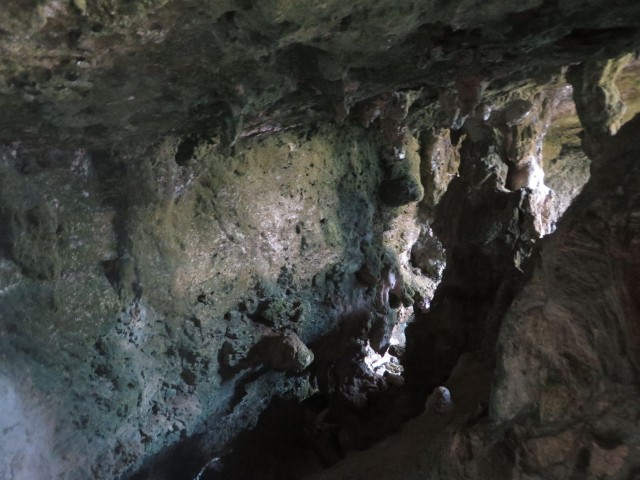







Over time, when it was “dirt cheap”, Johnston acquired land at Little Harbour, selling some pieces here and there to other “vagabonds from varied backgrounds.” Today the community surrounding Pete’s Pub is quite eclectic – artists, doctors, lawyers, engineers, airline pilots, and boat bums. So it is said. This remote little solar-powered community is now threatened by the invasion of “progress.” Southworth Development (Massachusetts based) plans to build a 44-slip marina, restaurant and shop in the anchorage, a 6,000-square-foot covered parking lot, storage facilities and generators. Let’s hope this doesn’t happen.
We left Little Harbour mid-day for the long trek to Lynyard Cay. Just kidding. It was a short 2-mile hop north. We both anchored just off of the sandy Lynyard Cay beach in beautiful clear water. Al, Peter and Laurie all went to shore to beach comb while I stayed behind, nursing this miserable cold. I’m missing all of the fun!!!!
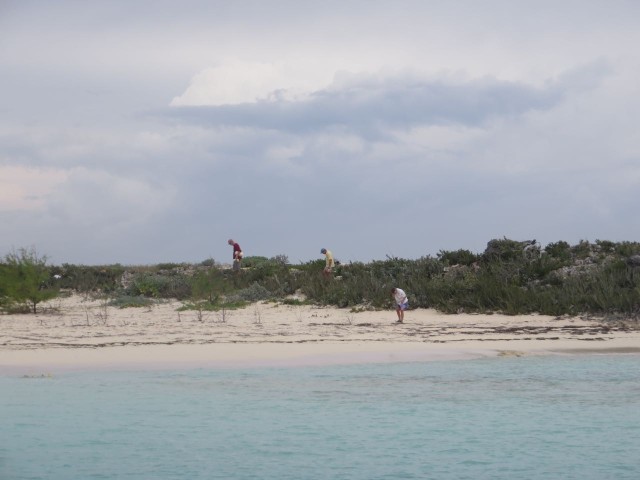
When Al returned to Kindred Spirit, he was excited to show me the things he had collected, his flotsam and jetsam. The National Ocean Service defines the two as: “Flotsam is debris in the water that was not deliberately thrown overboard, often as a result from a shipwreck or accident. Jetsam describes debris that was deliberately thrown overboard by a crew of a ship in distress, most often to lighten the ship’s load. The word flotsam derives from the French word floter, to float. Jetsam is a shortened word for jettison. Under maritime law the distinction is important. Flotsam may be claimed by the original owner, whereas jetsam may be claimed as property of whoever discovers it.” Al had picked up a few more floats, which were probably long-forgotten flotsam. Really, when you find something washed ashore on a beach, how do you know if it was flotsam (accidental) or jetsam (thrown over)??? And do you really care at that point??
The best thing that Al found, in my opinion, was two more sea beans – he is having a good year for sea beans! He was so thrilled to show them to me as soon as he stepped onto the transom, that he forgot to tie the dinghy. Uh oh. Off came the clothes —-

We stayed overnight on anchor at Lynyard Cay. A calm, silent, and dark night. There is nothing around to disturb you. Just beautiful.


This day was a top ten – perfect! (For the record, Tuesday, February 2, Groundhog Day to those of you up north.)
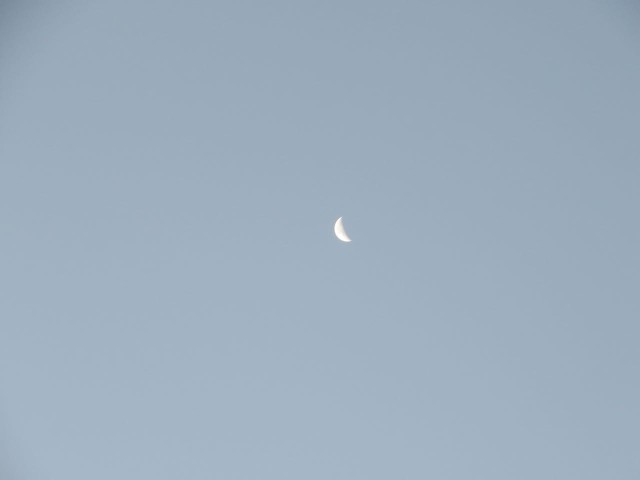
Al decided that this was the perfect day and place to check off one of his “wish list” items. He has always wanted to clean the bottom of the boat in shallow water by grounding it. Yup, that was a dream of his. I looked out to see we were drifting closer to shore. And closer. But we weren’t drifting, the boat was being pulled. There he was, with Peter’s help, dragging Kindred Spirit by the anchor chain, heavy rocna and all.


Al “MacGyver’ed” together the contraption in the photo above. He was inspired by Anthony on Magnolia to attach something to the long handle brush to push the brush up against the bottom of the boat. Thus, an old Type 4 flotation device was surrendered for a new purpose in life. The floating bottom cleaning brush in action —-



After cleaning topside while he worked under the boat, I decided it was time for me to play. I was feeling a lot better. What a glorious day to wander in the shallow water and find interesting things on the beach and in the water.

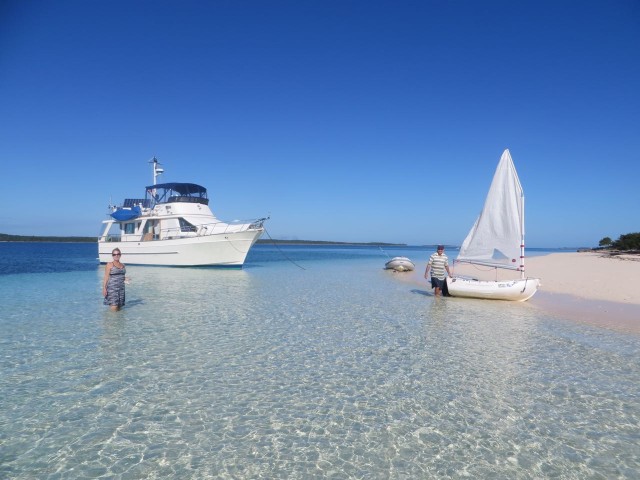


After such a glorious morning, it was hard to leave this anchorage, but the tide rose and lifted Kindred Spirit off of the sandy bottom (it’s important to plan that part when beaching a boat for a bottom scrubbing.) On our way back “home” to Hope Town, a 17 nautical mile leg, we planned a stop at Snake Cay for a dinghy exploration. Snake Cay is a small cay on the eastern side of Great Abaco Island. Back in the 1950s, Snake Cay was the headquarters of the International Paper Company’s timbering operation in the Abacos. Eventually there was no more timber, so they tried to establish a sugar industry which failed. All that is left of the original operation is a derelict quay.

Once around the bend, you can dinghy behind Deep Sea Cay in shallow water, best at higher tides even with a dinghy. The water is crystal clear.


Four really fine days! It’s a long post that took even longer than usual to do thanks to the very weak and intermittent wifi lately. But it was worth preserving the memories.

Leave a Reply